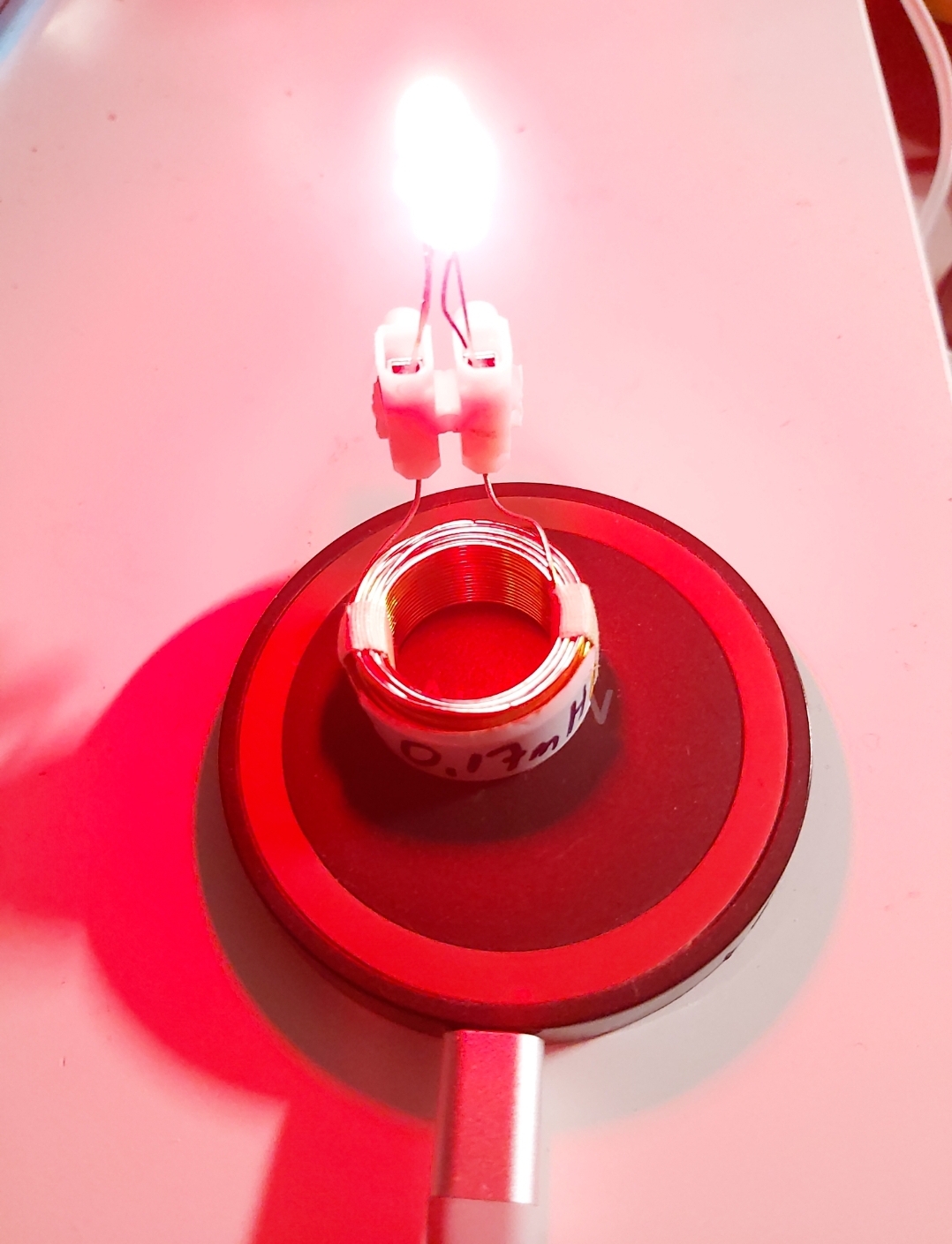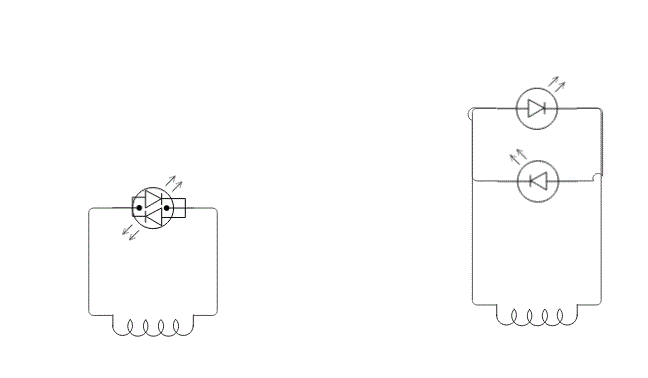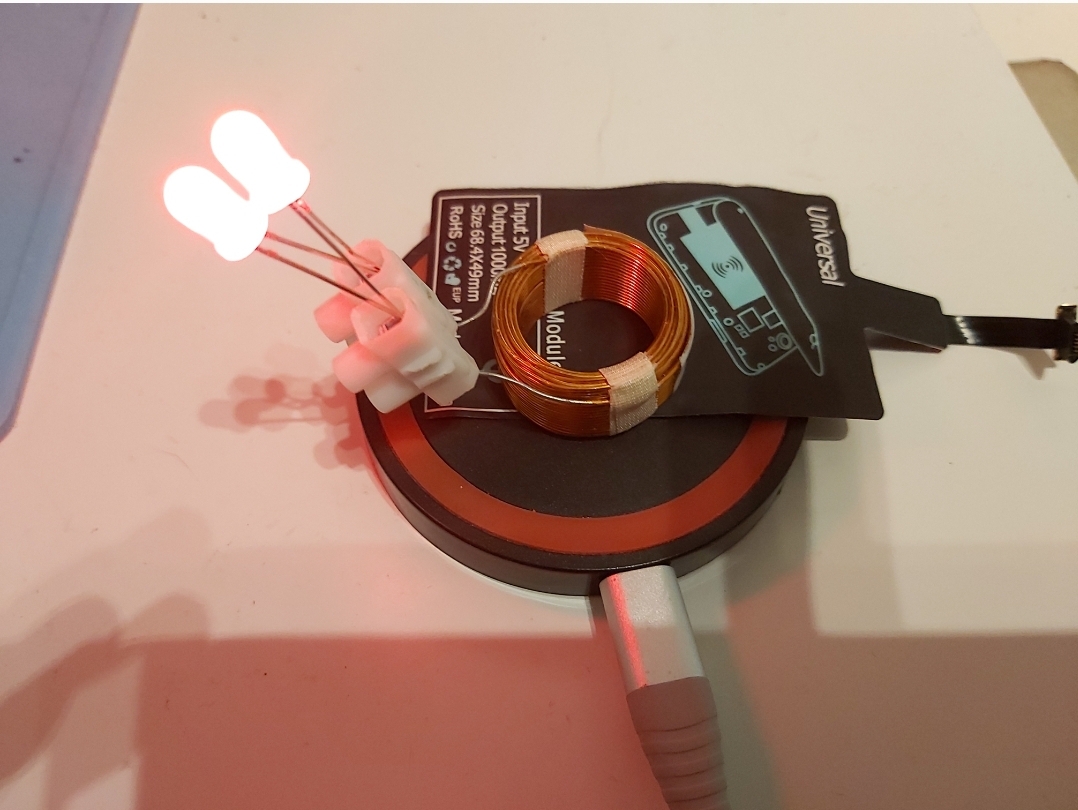Here is one experiment to power two LEDs using Qi standard smart phone charger. The two LEDs are wired to opposite directions in parallel to the output wires of 0.17 mH coil. The coil has around 80 turns (5 layers and about 16 turns each)
Here is LED active
I actually built two circuits with the same idea, one used two LEDs and other user a bidirectional LED.
Here is my video of LED flashing on Qi charger:
The Qi charging system for smart phones has some differences compared to toothbrush charger. Devices that operate using the Qi standard rely on electromagnetic induction between planar coils. A Qi system consists of two types of devices – the Base Station, which is connected to a power source and provides inductive power, and Mobile Devices, which consume inductive power.
In the case of Qi-compliant devices, frequencies in the range of 87 to 205 kHz are typical. The reference Qi low-power transmitter has a coil of 20 turns (in two layers) in a flat coil, wound on a form with a 19 mm inner diameter and a 40 mm outer diameter, with a below-coil shield of soft iron at least 4 mm larger in diameter which gives an inductance of 24 ± 1 microhenries. This coil is placed in a series resonant circuit. Power control is automatic. Qi charge transmitters start their connections at 140 kHz, but can change frequencies to find a frequency with a better match. Regulation of the output voltage is provided by a digital control loop where the power receiver communicates with the power transmitter and requests more or less power.
The Qi power receiver hardware reference design 1, also from version 1.2.2 of the Qi specification, starts with a rectangular coil of wire 44 mm × 30 mm outside size, with 14 turns of wire, and with an above-coil magnetic shield. This coil is wired into a parallel resonant circuit with a pair of capacitors. The receiver tells the transmitter either by modulating the magnetic field (so that the transmitter can detect this as data) or by sending a separate signal.
In my simple LED circuit there is no standard compliant return signal from my circuit to the charger. So the charger first sends some pulses of energy trying to find a proper receiver (you see that as LED flash). When no right type of receiver was detected, the Qi charger stops sending energy. It waits for some time, and tries again to find if there is a standard compliant receiver near transmitter. So this continuous trying to find the receiver makes the LED flash.
Unless you communicate back, the charge power won’t be activated. They work a bit along the NFC principle and USBC. Here’s some power, how much do you want? No answer, repeat. Otherwise provide power as requested.
When I put a Qi standard power receiver device on same charger, I get constant output to LED.
Links to more information:
https://en.wikipedia.org/wiki/Inductive_charging
https://www.epanorama.net/newepa/2024/02/02/oral-b-toothbrush-charger/
https://en.wikipedia.org/wiki/Qi_(standard)



2 Comments
Brett Hardy says:
A very awesome blog post. We are really grateful for your blog post.
Hardy says:
Awesome and interesting article. Great things you’ve always shared with us. Thanks.